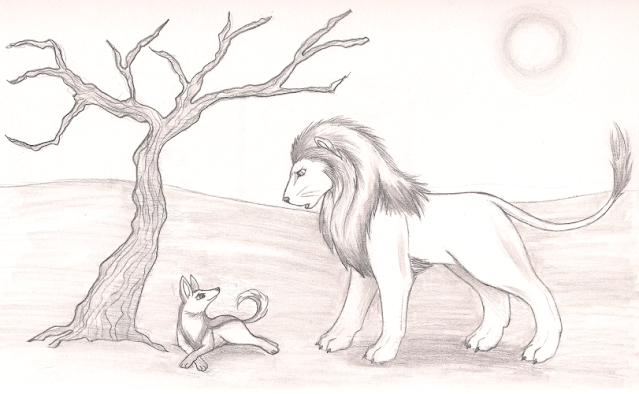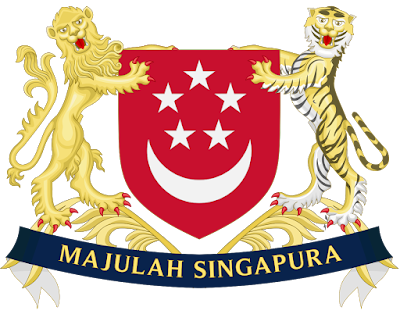Amistad: Fact vs Fiction
Mende slaves fighting their captors on the Amistad
Steven Spielberg's 1997 film Amistad based on the true story of slaves who upon being taken prisoner aboard the Spanish vessel La Amistad rebelled against their captors with the help of their leader Sengbe Pieh known more as Cinque and were put on trial for murder in the United States only to be saved and returned to their homeland thanks to former President John Quincy Addams is a true story. However most of the story is fictionalized and some important characters are sacrificed to pay attention to characters who had nothing to do with the story as well as the absence of others who were involved in the case. Here are the true facts surrounding the Amistad case
Steven Spielberg's 1997 film Amistad based on the true story of slaves who upon being taken prisoner aboard the Spanish vessel La Amistad rebelled against their captors with the help of their leader Sengbe Pieh known more as Cinque and were put on trial for murder in the United States only to be saved and returned to their homeland thanks to former President John Quincy Addams is a true story. However most of the story is fictionalized and some important characters are sacrificed to pay attention to characters who had nothing to do with the story as well as the absence of others who were involved in the case. Here are the true facts surrounding the Amistad case
1. Cinque (played by Djimon Honsou) did not free himself by plucking the nail that held his chains out of the floor below deck and later used them to break his own chains off himself but rather used a file that he safely kept within his tunic given to him by a woman who had been taken prisoner on the ship known as the Tecora that took them to Cuba where he and other Mende were transported onto the Amistad
2. When the Mende broke free, the first person they killed was the ship’s cook Celestino who told them (in of course language that was non-understandable to them) that they were to be killed and eaten by their captors before killing the captain himself and the former is absent in the film. Two of the sailors who failed to hold the Africans back chose to abandon ship and escape in a lifeboat. The ship's cook is absent in the film as are the sailors who managed to escape
3. Jose Ruiz and Pedro Montez had a creole named Antonio as an interpreter when the Africans told them to sail back to their country but he is absent in the film
4. When Jose Ruiz and Pedro Montez sail under the command of the Africans at night, they pass an English ship which is holding a party. This never happened as no vessel came within sight of the Amistad following the mutiny although due to the ship being sighted repeatedly along the East Coast of the United States, due to Jose Ruiz and Pedro Montez deceiving the captives by giving them false directions to sail back to their homeland in West Africa, the U.S Revenue Cutter Service ship USS Washington commanded by Lieutenant Thomas R. Gedney, saw some of the Africans who stepped onto shore to find food and water and, assisted by his officers and crew, took custody of La Amistad and the Africans
5. The elderly abolitionist and former slave Theodore Joadson (played by Morgan Freeman) who is a colleague to the Amistad case’s most important abolitionist, Christian activist Lewis Tappan (played by Stellan Skarsgard) was not a historical character but rather a representative of free and wealthy African-Americans during the 1800s even though the story is set in 1839. However there were a few African-American abolitionists who did participate in the case and may have inspired the creation of Joadson
6. Lewis Tappan did not serve in a newspaper company nor was there any evidence that he owned various business and several banks as the film implies. Instead he worked strongly with the Christian Church and put his faith in God to fight for the Amistad captives
7. Roger Sherman Baldwin (played by Matthew McConaughey) the lawyer chosen to represent the Amistad captives in the case was an older and more experienced lawyer with orthodox methods. He also respected Lewis Tappan’s views on the approach of seeking faith in God to help in the case although it is unknown whether or not Baldwin believed in God at all
8. When the elderly former president and politician John Quincy Adams (played by Anthony Hopkins) is introduced, he is shown sleeping during a meeting at the White House who expects a statement from him and aware that he is about to be woken up, speaks with closed eyes. He never did this at any point and was always attentive in political proceedings
9. In the film John Quincy Addams says he neither stands for slavery nor does he go against it when Lewis Tappan and Theodore Joadson approach him to help fight the case. Instead he simply stated that while he was against slavery, he felt he could not take the case at which Tappan hired Roger Baldwin. Also unlike the film where Tappan and Joadson at first do not approve of Baldwin and only hire him when Addams turns down the offer to fight the case, Tappan was one of many people who appointed Baldwin and was completely open to having him represent the Mende whereas in the film, Joadson is the one slowly opening up to Baldwin and this convinces Tappan to do so after Baldwin proves that the captives came from West Africa and were transported from the Tecora to the Amistad in Cuba thanks to documents found aboard the Amistad since the prosecution during charging the captives with murder said that the captives came from Cuba itself
10. Following the election of a new judge in the Amistad case, much to the fury of Roger Baldwin, Theodore Joadson goes to visit John Quincy Addams in Massachusetts in an attempt to persuade him to join the case although more to give him news regarding the case which Addams has been reading about. In reality it was both Lewis Tappan and Baldwin who would go at different and various times (seperately) to try to convince Addams to join the case although each time he felt that he was not ready to take the case
11. Josiah Gibbs, a linguist chosen for the case who attempted to interpret the captives’ language learnt to count from 1 to 10 in Mende by listening to some of the Amistad Africans counting. He walked around the nearby bay chanting Mende numbers so that those who understood or recognized the words would come up to him. In this way he came into contact with former slave and sailor James Covey (played by Chiwetel Ejiofor). In the film however he simply teaches Roger Baldwin and Theodore Joadson to count from 1 to 10 in Mende before the two go into the nearby bay to find someone who understands Mende while they were counting from 1 to 10 in it and it is Joadson who finds Covey. Also Covey’s African name was not Kai Naiaguya but 'Kaweli' meaning 'war road' and he was placed under the protection of Lewis Tappan rather than that of Baldwin or an African-American abolitionist although Baldwin did seek Covey’s help in translating the testimonies of the Amistad captives. Also accompanying Covey once he was discovered by Gibbs was British sailor Charles Pratt who is not shown in the film; unlike Covey who remained in New Haven where the case was taking place, Pratt, left on another ship and his whereabouts remained unknown
12. There is no record of any of the captives having died while in custody like the film depicts. Out of 49 of the Africans only 35 survived and those who did not were either abused on the ships that transported them, threw themselves overboard to drown or died during their mutiny against the crew of the Amistad. Also while the Mende were stripped naked at times like most slaves would be while being transported onto ships, none of them were forcefully tied and thrown overboard by their captors into the ocean to ration the provisions on board or to cover up the crimes of the slavers like the film depicts. None of the Mende women were raped either
13. Most of the story is told from the eyes of Cinque and he is the only Amistad captive who is approached by Roger Baldwin and his defense team to tell his story to the court through James Covey. In truth, only three of the Africans, Cinque included spoke Mende and thus testified before the federal court through Covey about their reasons for mutiny on the Amistad. Also except for an African-American on trial, no African-American even an abolitionist could enter the White House or a courtroom for that matter. Baldwin's defence team was even larger and Lewis Tappan was with him at all times alongside numerous other abolitionists when they went to speak to Cinque through Covey in prison before they went to court where Cinque could tell his story
14. Nothing was ever mentioned about Cinque killing a lion that had been terrorizing his people. Unless it was a huge rock which could cause concussion, it is highly unlikely that any stone could have killed a lion when thrown at the animal. He also never kept a lion’s tooth or the tooth of any animal and made no mention of his family until he went to court
15. When various witnesses or people with knowledge of the Amistad case speak in court, Cinque, having mastered some English thunders ‘Give us free!’ much to the admiration of those in court who support him as well as other captives and African-Americans. In truth, Cinque never attempted to understand or learn English nor did he try to protest openly in any way in court
16. While the film depicts Seniors Jose Ruiz and Pedro Montez being arrested for transporting the Africans during the victory in the federal court, they were simply sent back to their homeland and while it is possible that they continued being involved in the slave trade, their whereabouts remained unknown
17. When the case is appealed to the supreme court after victory in the federal court, Roger Baldwin and Theodore Joadson are about to break the news to Cinque when Lewis Tappan who is furious at the decision to approach the supreme court splits up with his colleague and the lawyer. It is true that Tappan was disappointed at the decision to appeal the case to the supreme court and did leave but unlike the film it was only temporarily. In fact when the supreme court ruled in favour of the Amistad captives thanks to Baldwin and John Quincy Addams, Tappan who learnt of the success in the supreme court wrote and sent a letter to Addams the next day thanking him and the two met a few days later to catch up on how they had been since the achievement of the case. Unlike the film where Tappan believes martyrdom of the captives may help in the case, he helped in organizing the Mende's return to Africa and realizing his dream of Christianizing Africa, he encouraged the Mende to take Christianity back with them and introduce the religion to their land
18. In the film, Roger Baldwin writes to John Quincy Addams asking him to help with the case and he eventually agrees to do so. Baldwin did write to Addams seeking his help in the case when it was appealed to the supreme court but unlike the film where Addams simply reaches New Haven once he receives Baldwin’s letter, Addams did write back and said that a few days before victory in the federal court he decided to get involved with the case. However unlike the film where Cinque tries his own investigations into finding out if the treaties that the United States has with other nations such as Spain and Cuba can help his case and tells James Covey to take these questions to Addams he was not familiar with this jurisdiction. Cinque also never ignored Baldwin for the case successfully reaching the Supreme Court appeal and agreed to try the case once again given that Baldwin did not tell Cinque that any judgement could set them free, instead focusing on how to free Cinque and his companions
19. John Quincy Addams never actually met Cinque or James Covey. Instead when the case got to the Supreme Court he argued in favour of the Amistad captives saying that they were free men although the lengthy speech he gives in the film is not what he actually said before the judges of the supreme court and his statement was not that long. Also he encouraged Roger Baldwin rather than himself to give the final statement. None of the Amistad captives, including Cinque or even Covey were present in court
20. While the court did rule in favour of the Mende captives, declaring them free individuals with legal and moral rights, including the right to combat those who denied them their freedom due to being kidnapped and sold illegally, thus dropping the charges of murder and mutiny against them, which were brought upon them by district attorney William Holabird in the first place, the film depicts them, Cinque and Covey returning to West Africa quite soon as well as the destruction of the lomboko fortress where they like countless slaves were taken to as soon as they were captured before being transported to Cuba and then to the United States. In real life, the American courts, Baldwin and numerous abolitionists tried to see how they could get the Mende back to their country since the president was not required to return them to Africa and they were no longer the property of Queen Isabella of Spain. It was in 1841 that Cinque, Covey and the other (surviving) captives of the Amistad returned to West Africa aboard a ship known as The Gentleman although they did not reach their homeland until a year later and the lomboko fortress was destroyed and its slaves rescued in 1849 ten years after the supreme court ruled in favour of the Amistad captives
21. Once Cinque returned to his country, he found his land engulfed in civil war and his family missing prompting him to partake in the war to search for his family. There were various reports regarding different stories about what became of him since his return from the United States; some say he joined the slave trade or returned to his life as a rice farmer although it is confirmed that he never saw his family again and was mortally wounded during the conflict and before succumbing to his wounds, requested and received a Christian burial. James Covey who was still involved in the struggle during the civil war later gained a mysterious ilness and had to be shifted from village to village before succumbing to his sickness
22. The re-election of President Martin Van Buren was not the only factor which resulted in the American Civil War during the 1860s but also because Queen Isabella of Spain who was to receive the captives if they lost the case in the United States tried to appeal numerous times to the supreme court to retry the case, all of which were turned down. Also she was not entirely a child as the film depicts but in her late 20s/early 30s. The American civil war depicted towards the end of the film has references to films involving both Steven Spielberg and Morgan Freeman, the latter of whom was (the first actor) cast by the former for Amistad; Glory (1989) directed by Edward Zwick was about the first African-American unit to fight in the American civil war. In it Freeman played a grave-digger who joins the unit whose foundation was based and built on the advice of (real-life) African-American abolitionist Frederick Douglas (played by Raymond St. Jacques) and soldier Robert Gould Shaw (played by Matthew Broderick). Lincoln (2012) also directed by Spielberg while continuing the story of the American civil war shows how American President Abraham Lincoln (played by Daniel-Daw Lewis) succesfully appealed the Thirteenth Amendment of the United States constitution to abolishing slavery and involuntary servititude to the United States House of Representatives, hoping to end the American civil war which largely occured due to slavery being opposed and in that way, African-Americans had the same rights as others




Casinos Near Me - Casino Near Me
ReplyDeleteCasinos Near Me 파주 출장마사지 · Dine 3 Bars, Pubs 동해 출장마사지 or 청주 출장안마 Brunch 동두천 출장안마 · Dine in the Marina District · Hotel/Casino · Bar/Casino · Gourmet Restaurants/Gourmet 경기도 출장샵 Tastes